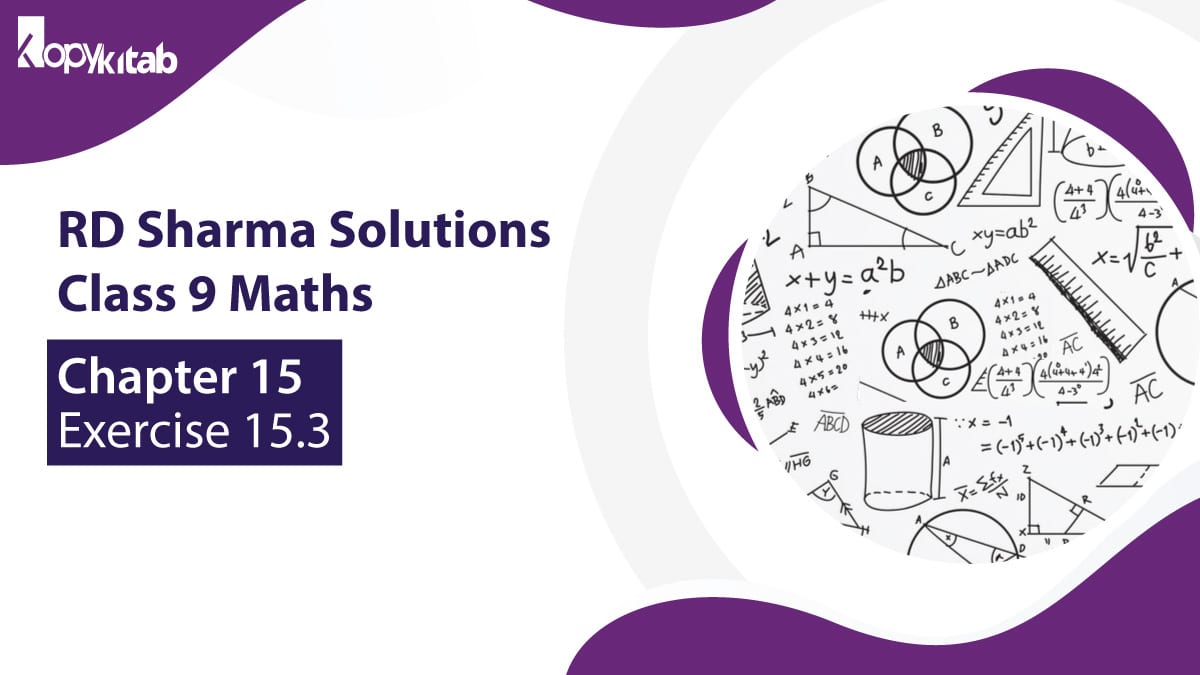RD Sharma Chapter 15 Class 9 Maths Exercise 15.3 Solutions is about the topics Parallelogram on the same base and within the same parallels, mainly a parallelogram and triangles, which is concerned under the Area of Parallelograms and Triangles. Learners will get to know- “how to compute the area of any quadrilateral which contains triangles.” A detailed explanation is provided for each problem mentioned in the attached PDF with this article.
The RD Sharma Chapter 15 Class 9 Maths Exercise 15.3 Solutions PDF is prepared by our subject experts by analyzing RD Sharma, Previous Year’s Question Paper, and CBSE Text Book of Class 9. Look down to the article to get more information on the topics and subtopics of this exercise.
Learn about RD Sharma Class 9 Chapter 15 (Areas Of Parallelograms And Triangles)
Download RD Sharma Chapter 15 Class 9 Maths Exercise 15.3 Solutions PDF
RD Sharma Class 9 Maths Chapter 15
Important Definitions RD Sharma Chapter 15 Class 9 Maths Exercise 15.3 Solutions
A parallelogram on the same base and within the same parallels
Suppose two parallelograms ABCD and ABEF, on the same base ‘AB,’ and between the same parallels, as shown below-

Theorem- A Parallelogram on the same base and between the same parallels are equal in area.
Proof of a theorem-
Consider the figure presented above. We can see the ΔBCE and ΔADF are congruent (similar). We have-
- BC = AD (opposing sides of a parallelogram are similar)
- ∠BCE = ∠ADF (Corresponding Angles)
- ∠BEC = ∠AFD (Corresponding Angles)
By the ASA criterion, the two triangles are congruent, which means that their areas are equal. Now,
= Area (ABCD) = Area (ABED) + Area (ΔBCE)
Then,
= Area (ABEF) = Area (ABED) + Area (ΔADF)
So,
= Area (ABCD) = Area (ABEF)
Hence Proved that a parallelogram on the same base and between the same parallels.
Examples of RD Sharma Chapter 15 Class 9 Maths Exercise 15.3 Solutions
Ques- In the figure, ABCD is a trapezium in which AB = 7cm, AD = BC = 5cm, DC = xcm, and the distance between AB and DC is 4cm. Find the value of ‘x’ and area of trapezium ‘ABCD’.

Solution-
Given- ABCD is a trapezium, where AB = 7cm, AD = BC = 5cm, DC = xcm, and
The distance between AB and DC = 4cm
Suppose AL and BM are perpendiculars on DC, then.
= AL = BM = 4cm and LM = 7cm.
In right ΔBMC-
By Applying Pythagorean Theorem, we get-
= BC2 = BM2 + MC2
= 25 = 16 + MC2
= MC2 = 25 – 16 = 9
= or MC = 3
Again,
In right Δ ADL-
By Applying Pythagorean Theorem, we get-
= AD2 = AL2 + DL2
= 25 = 16 + DL2
= DL2 = 25 – 16 = 9
= or DL = 3
Therefore, x = DC = DL + LM + MC = 3 + 7 + 3 = 13
= x = 13cm
Now,
Area of trapezium ABCD = 1/2(AB + CD) AL
= 1/2(7+13)4
= 40
Area of trapezium ABCD is 40cm2
Frequently Asked Question (FAQs) of RD Sharma Chapter 15 Class 9 Maths Exercise 15.3 Solutions
Ques 1- Can a parallelogram be separated into two triangles?
Ans- As per the theorem of parallelogram-
- Each diagonal of a parallelogram bisects (divides) the parallelogram into two similar (congruent) triangles.
- The opposite edges/ sides of a parallelogram are similar (congruent).
Ques 2- What is diagonal in a triangle?
Ans- The diagonal in a triangle is known as Regular Polygon.
A triangle has no diagonals. A square has two diagonals of the same length, which cross at the center of the square.
